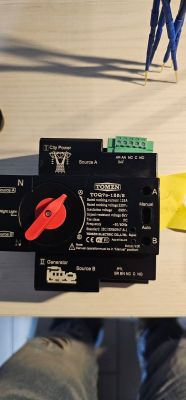Welcome,
I am in the process of building a detached house and would like to make some improvements. I am a mechanical builder and electrical/electronic issues are rather alien to me. Why am I getting into this? Because I like to develop, I like to tinker and do things myself, plus I'm cutting costs ready-made solutions from the market are a big expense.
Smart home is too much to say. I would like the system to be wired, I will leave wireless solutions for later - in case of system expansion.
It should look like this:
Rpi 3 + domoticz + Arduino mega to increase the number of inputs/outputs.
Elements I want to control: approx. 25 lighting points, external blinds (11 of them), intercom (to open the gate when I am not at home), heating (the whole house is underfloor, I would like to control each room loop separately. I have 11 loops), I am still thinking over music in the toilets.
To control: stair switches, motion sensors (2), temperature sensors 11 pieces, rain sensor and reed switches in the windows (11 pieces window open + rain close roller shutter) .
Quite a lot of this and I'm wondering if my simple layout can cope with it and if it has a chance of working stably.
In a nutshell I plan to connect each sensor/switch with a wire to an Arduino split. Blinds, lights etc. Through the przekaniki also controlled from the Arduino, on which the only thing that will happen is the corresponding output signal when the corresponding input is received.
I was planning to create the logic already at the Domoticz level, e.g. to determine the set temperature in a room and control the underfloor heating on this basis.
Do any of you have experience with such a simple system in practice? What disadvantages do you see and do they defeat the purpose of such an installation?
What worries me :
1. the operation of the system during a storm. Will a large number and length of cables not be a problem? I will make a big antenna out of the house. Shielded cables will help?
2. failing cards in the rpi. Is it enough to have a second identical card, with a backup of the whole thing and just swap cards in case of a fault?
I am in the process of building a detached house and would like to make some improvements. I am a mechanical builder and electrical/electronic issues are rather alien to me. Why am I getting into this? Because I like to develop, I like to tinker and do things myself, plus I'm cutting costs ready-made solutions from the market are a big expense.
Smart home is too much to say. I would like the system to be wired, I will leave wireless solutions for later - in case of system expansion.
It should look like this:
Rpi 3 + domoticz + Arduino mega to increase the number of inputs/outputs.
Elements I want to control: approx. 25 lighting points, external blinds (11 of them), intercom (to open the gate when I am not at home), heating (the whole house is underfloor, I would like to control each room loop separately. I have 11 loops), I am still thinking over music in the toilets.
To control: stair switches, motion sensors (2), temperature sensors 11 pieces, rain sensor and reed switches in the windows (11 pieces window open + rain close roller shutter) .
Quite a lot of this and I'm wondering if my simple layout can cope with it and if it has a chance of working stably.
In a nutshell I plan to connect each sensor/switch with a wire to an Arduino split. Blinds, lights etc. Through the przekaniki also controlled from the Arduino, on which the only thing that will happen is the corresponding output signal when the corresponding input is received.
I was planning to create the logic already at the Domoticz level, e.g. to determine the set temperature in a room and control the underfloor heating on this basis.
Do any of you have experience with such a simple system in practice? What disadvantages do you see and do they defeat the purpose of such an installation?
What worries me :
1. the operation of the system during a storm. Will a large number and length of cables not be a problem? I will make a big antenna out of the house. Shielded cables will help?
2. failing cards in the rpi. Is it enough to have a second identical card, with a backup of the whole thing and just swap cards in case of a fault?





